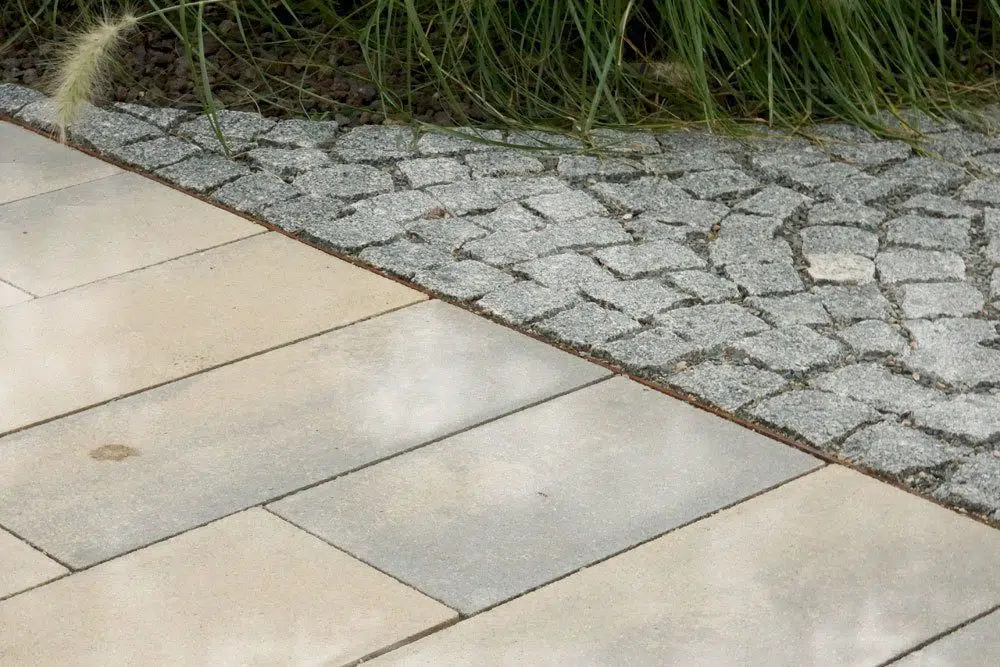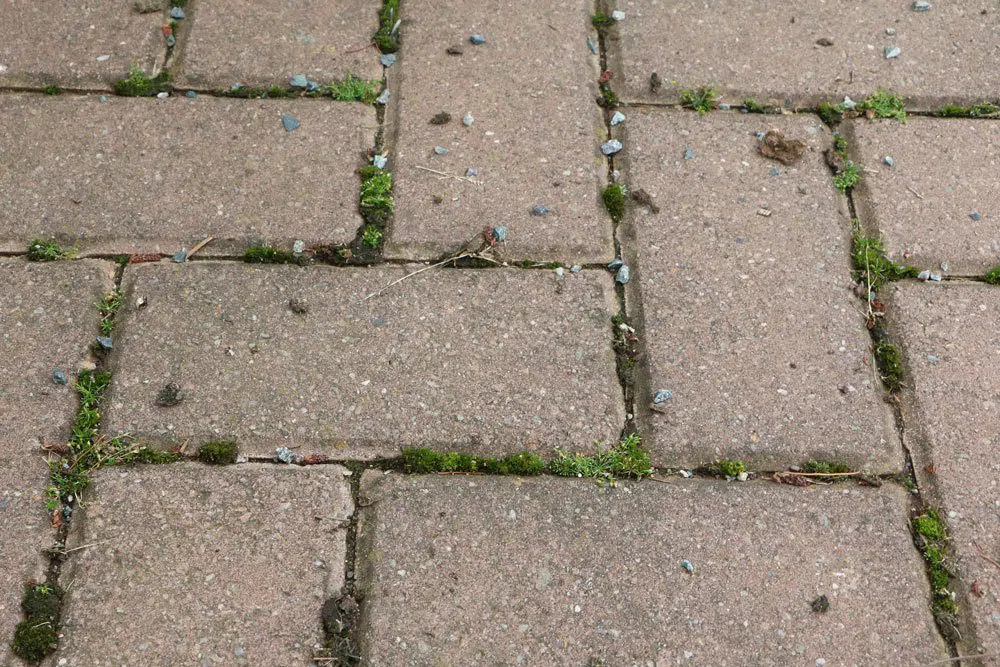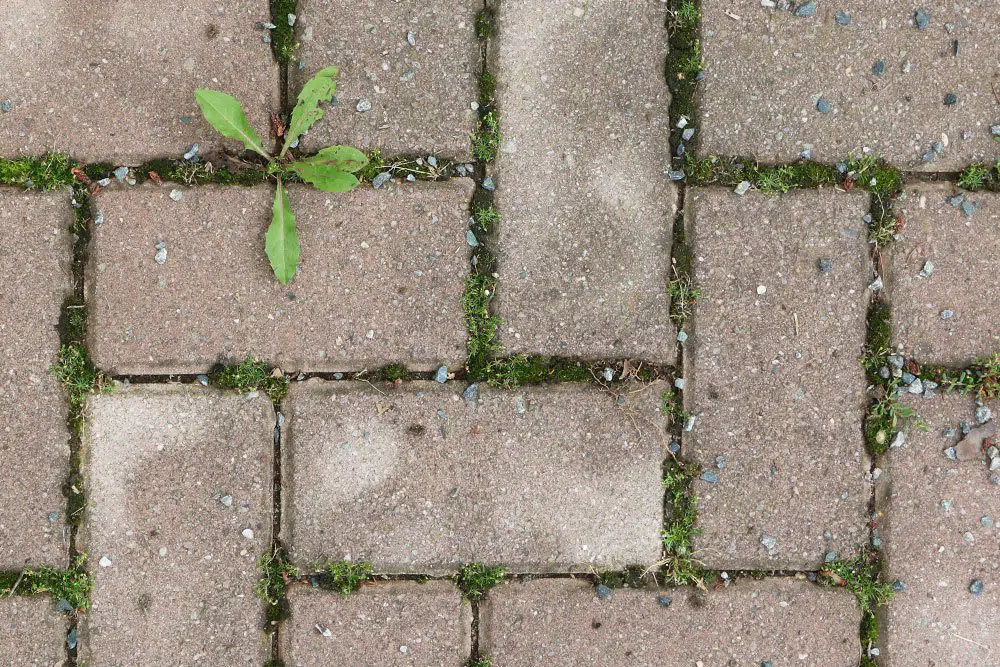Paving stones or concrete pavers can be found on many sidewalks or garage driveways. They are often seen in plain gray, but they also come in many other colors. Regardless of the color, the joy of the new stones is marred by white spots that often form shortly after installation. And many owners think that there is something wrong with their concrete pavers. In principle, this can be agreed with, but the white spots are usually a natural phenomenon that can be removed by simple means.
Contents
Where do the white spots come from?
White spots on the concrete pavement, as a rule, do not come from “above”, but form out of the paving stones. They come from the inside of the stones, i.e. from “below”. That is why they are called efflorescence in technical jargon. In contrast to a white spot on plaster or masonry, efflorescence on concrete is not a matter of salts, but of lime deposits.
Whether and to what extent these lime deposits occur depends on the cement used for the concrete. The level of limestone content in the cement is important in this respect. Although most of the limestone is bound, there may also be an excess that is not bound. This excess is triggered by water penetration and slowly comes to the surface. As the water evaporates over time, the white limestone deposits remain on the ground.
Do the white deposits harm the concrete pavement?
The white deposits do not harm the concrete. However, they are considered a nuisance by many garden owners because they don’t look very pretty on the pavers. They usually occur on young pavers that are no more than five years old. In addition, the pavers also need to be regularly wet so that the excess lime can be dissolved. That is why they usually do not appear in older concrete pavers, because after a few years all the excess limestone has been dissolved from the pavers.

Tip: As natural deposits, the white spots also disappear by themselves after some time, as they are washed away by the rain.
Removal of white spots
Removal of efflorescence can be done by water or with the help of chemical agents.
Stain removal with water
For nature and the environment, this form of stain removal is the best, because in this case only water is used. In addition to the water, you will also need a brush for scrubbing.

To remove, proceed as follows:
- Apply water
- Scrub until all efflorescence is removed
- Rinse pavers thoroughly with water
Tip: A warm, overcast day is suitable for removing white deposits.
A high-pressure cleaner is only suitable to a limited extent for removing stains, as it expands the pores of the stones, which promotes staining and corrosion. Therefore, it is better to resort to a brush and scrubber, even if it involves increased effort.
Chemical stain removal
The removal of efflorescence by means of chemicals is controversial among experts, especially when it comes to acidic cleaning agents, as these agents attack the stones. In the case of colored stones, this can also lead to color changes on the surface. Should you nevertheless resort to such an agent, the concrete must be well wetted before treatment. In addition, the cleaning should be done quickly so that the acid cannot penetrate deeper into the concrete. After cleaning, the concrete pavement must be thoroughly rinsed with water. It is best to carry out chemical stain removal on an overcast and windless day with a temperature between 10 and 20 degrees Celsius.
Tip: When buying the cleaning agent, make sure that it is suitable for your paving stones and follow the instructions exactly. In addition, you should test the agent on a small area.
White stains from road salt
White spots often appear on concrete pavers after long and cold winters. These could be caused by road salt, even if you have not used road salt in the garden, as it is also spread on the stones by the soles of shoes. Although these unsightly stains also disappear over time, they can also be removed with water, just like the lime deposits.

Sealing paving stones
Sealing or impregnating paving stones is not mandatory. However, it protects the stones from fading and also makes them shinier. In addition to these visual enhancements, the stones are also protected from other influences.
These include:
- Weathering
- Frost
- Foreign matter
- road salt
- Moss, algae and lichen
Sealers and impregnators for concrete blocks are special agents based on epoxy resin or dispersion. To ensure that the protection is effective, care must be taken to seal the joints as well. You can get the appropriate sealant for concrete pavers in specialized stores. It is important that the agent does not seal the ground completely, because this can promote frost damage. Therefore, the pavers must remain open to diffusion, which means that water must be able to rise despite protection.
Before starting the sealing process, the paving stones must be thoroughly cleaned. In the best case, they should look like new. After that, they must dry well. Only then can the sealing be started.
Tip: Always test the sealant on a small area before treatment.
Although the sealant protects the paving stones from the weather and dirt, the stones still need to be cleaned regularly. To ensure that the stones have a long life, they should be thoroughly cleaned once a year.


